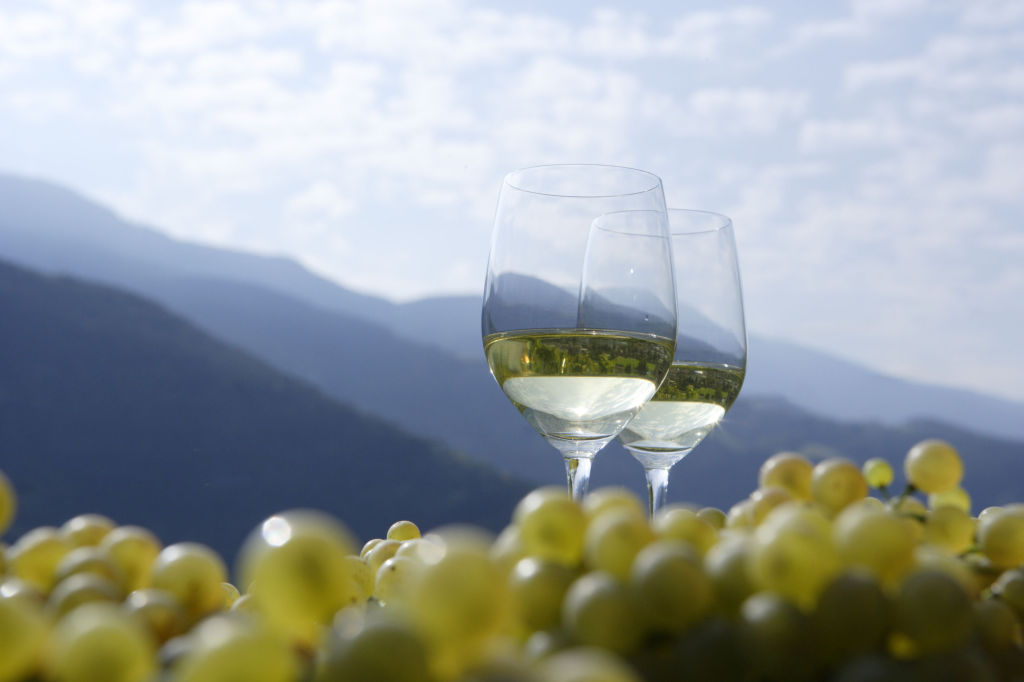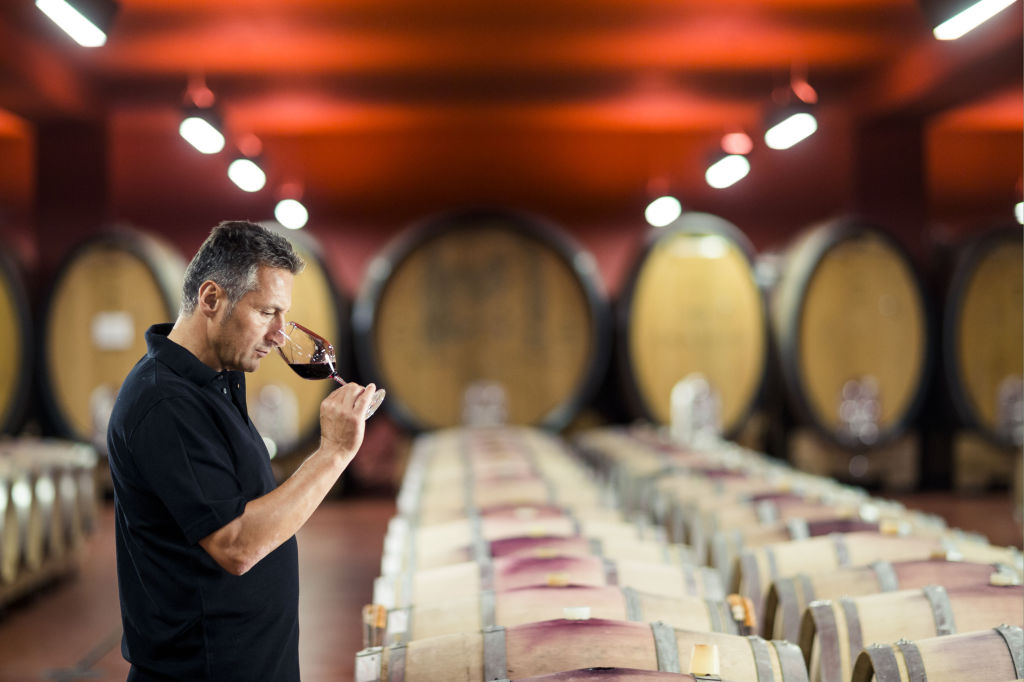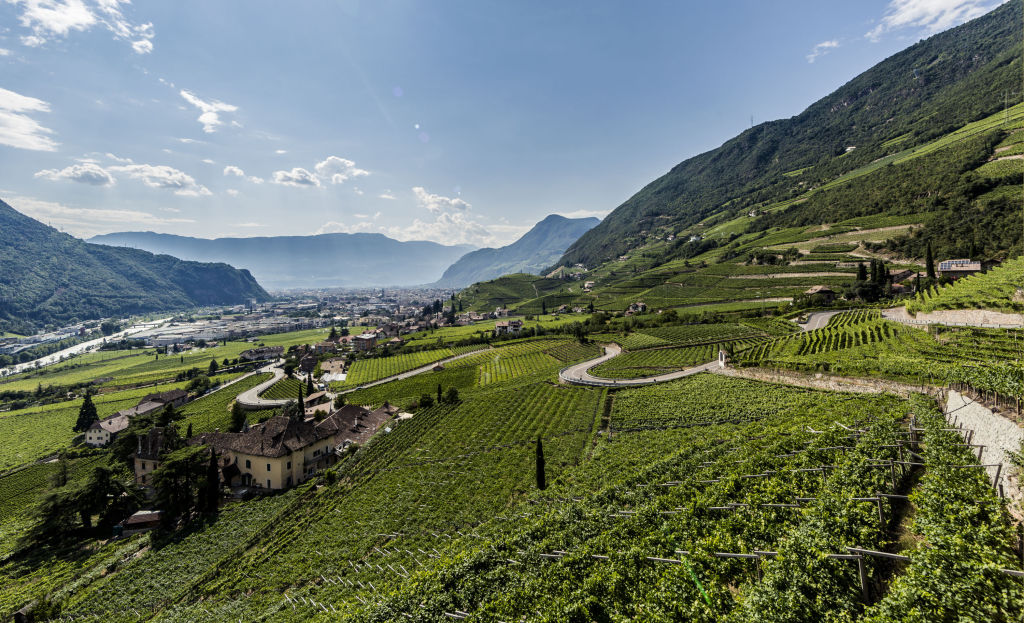 Alto Adige, which lies at the northernmost point of Italy on the Austrian border, combines the positive aspects of these two winegrowing cultures. Up in the Isarco Valley, snow-covered peaks and precipitous rocky cliffs are impressive clues of cool-climate winegrowing moulded by the Alps. In the southern Bassa Atesina, cypresses and fig trees already promise wines with Mediterranean charm. These contrasts in the smallest of spaces are taken advantage of by Alto Adige’s winegrowers in order to produce an impressively varied palette of top wines.
Alto Adige, which lies at the northernmost point of Italy on the Austrian border, combines the positive aspects of these two winegrowing cultures. Up in the Isarco Valley, snow-covered peaks and precipitous rocky cliffs are impressive clues of cool-climate winegrowing moulded by the Alps. In the southern Bassa Atesina, cypresses and fig trees already promise wines with Mediterranean charm. These contrasts in the smallest of spaces are taken advantage of by Alto Adige’s winegrowers in order to produce an impressively varied palette of top wines.
Around twenty major varieties grow here in their preferred location. So it is no wonder that Alto Adige is the only wine region in Italy that covers all facets of wine style at a high level. The spectrum ranges from naturally pure extra brut sparkling wine to freshly fruity Pinot Blanc to complex white cuvées that have been aged in small oak casks. And with the red wines, all options are open to wine enthusiasts, from vibrant, lively Schiava to velvety Lagrein to the aristocratic Cabernet Sauvignon. And because Alto Adige’s winegrowers refuse to be satisfied simply with this remarkable array, they also make a series of bewitching dessert wines from Moscato Giallo, Moscato Rosa, and Gewürztraminer.
Together for a better quality
Thanks to a continuous process of optimization, Alto Adige’s winegrowers have been successful over the past decades in taking advantage of the quality potential of their varied land as never before. All sectors of the Alto Adige wine industry have been and continue to be involved in this quality process: the estate wineries, which operate according to the chateau principle and only make wine from grapes that they have grown themselves; the private wineries, from which a great deal of the impetus for the improvement in quality originated in recent years; and the cooperatives, which produce seventy percent of Alto Adige wines and whose selections are greatly represented in the top quality segment.
 The Reinassance of the indigenous grapes
The Reinassance of the indigenous grapes
In recent decades, around twenty grape varieties have established themselves in Alto Adige/Südtirol. International varieties such as Sauvignon Blanc, Chardonnay, Pinot Noir, or Merlot give winegrowers the possibility of measuring themselves against wines from other regions. This healthy competition has contributed substantially to the excellent international reputation of Alto Adige wine.
At the other end of the spectrum are the old and established varieties. They represent the uniqueness of the wine-growing region of Alto Adige and pair very well with the rustically influenced regional cuisine. When viewed at the international level, the wines continue to achieve admirable levels of fullness of fruit and alcohol content, but Alto Adige’s winegrowers have shown with their Schiava how important it is to have a quaffable everyday wine in their lineup. Lagrein, with its aromas of berries and fresh cherries as well as its velvety body on the palate, perfectly matches the flavor profile of the contemporary wine lover. For this reason, Lagrein, which had almost completely disappeared in the 1970s, has experienced a spectacular renaissance, and today it is an important emblem of the Alto Adige wine industry. Something similar also holds true for Gewürztraminer. Having been mentioned in its “home village” of Termeno as early as the thirteenth century, this aromatic white variety today demonstrates its own Alto Adige characteristics that join together an intense flavor experience with drinking enjoyment. Interesting enough, it is precisely the area of fine dining which is discovering this new generation of traditional wines from Alto Adige for new and bold pairings, such as chilled Schiava with fried fish or Gewürztraminer with Asian cuisine.
The new corporate design
It is a symbol of the dynamics in Alto Adige winegrowing. It consists of the bilingual inscription in German and Italian “Südtirol Wein-Vini Alto Adige” in connection with a logo. The latter, in turn, depicts a stylized mountain range which was derived from the Alto Adige/Südtirol umbrella brand. The capsule on the wine bottles was also redesigned to correspond with the optimized corporate design. No fewer than 98% of the total vineyard area in Alto Adige is DOC classified.
The Seven Winegrowing Zones
Bassa Atesina
The southernmost cultivation area of Alto Adige/Südtirol is also the largest and the warmest. Even late-ripening varieties such as Cabernet Sauvignon yield balanced wines here. Interestingly enough, though, we also find Alto Adige‘s highest vineyards here. Near Magrè, Müller-Thurgau vines grow at over 1,000 meters (3,300 feet). The villages of Mazzon and Montagna are regarded as strongholds of Pinot Noir. And in Termeno, home of the Gewürztraminer, that grape is experiencing a renaissance.
Oltradige
With its softly rolling vineyard gardens and proud castles, Lake Caldaro is the heart of Alto Adige’s wine country. Appiano and Caldaro are the two most important winegrowing communities. Today, the name of Lago di Caldaro or Kalterer See no longer stands only for Schiava (which proudly carries the name of the lake), but also for well-structured Merlots, Cabernets, and Pinot Noirs. At the higher elevations, Pinot Blanc, Pinot Grigio, Chardonnay, and Sauvignon Blanc are grown.
Bolzano
Bolzano is not just the capital of Alto Adige/Südtirol, but also its third largest winegrowing community. Two of the most prizewinning wines grow here. The “classic” Santa Maddalena (St. Magdalener) grows on the hills of the same name as well as in the neighboring areas of Santa Giustina, Rencio, Costa, and San Pietro. It is regarded as the noblest and strongest Schiava. Gries, a section of Bolzano, is instead the cradle of the indigenous variety Lagrein.
Adige Valley
It is the red porphyry sandstone which above all else lends the white wines from the Adige Valley a particular mineral tone. All wines with the “Alto Adige Terlano” DOC designation of origin are white wines. This white cuvée is a particular specialty. It consists of a majority of Pinot Blanc, Pinot Grigio, and Chardonnay.
In the Isarco Valley, primitive rock soils dominate, usually from quartz or mica, but sometimes also from slate. The Sylvaner and Müller-Thurgau grapes produce fresh, drinkable wines with a mineral quality and a stimulating interplay of acidity. For several years now, top wines made from Kerner and Riesling have been astounding the experts.
Merano
The winegrowing area known as the “Burgraviate” consists of Merano and the surrounding villages. The extremely mild, balanced climate and the light to moderately heavy sandy soils form the perfect conditions for winegrowing. The DOC “Alto Adige Meranese” is valid for all Schiava wines that grow in the vicinity of the city. Pinot Noir and Merlot also show a lot of character here. Wines from Merano always have a distinctive presence of acidity.
Val Venosta
With an average of only 400 mm. (16 in.) of precipitation each year, it receives only about half as much as in the Bassa Atesina. A “cool climate” cultivation of wine is carried out on infertile, sandy soil, producing particularly subtle, drinkable wines. In addition to Pinot Blanc and Müller-Thurgau, Pinot Noir has been developing into a genuine Val Venosta specialty.
The white Wines of Alto Adige/Südtirol
The Red Wines of Alto Adige/Südtirol

